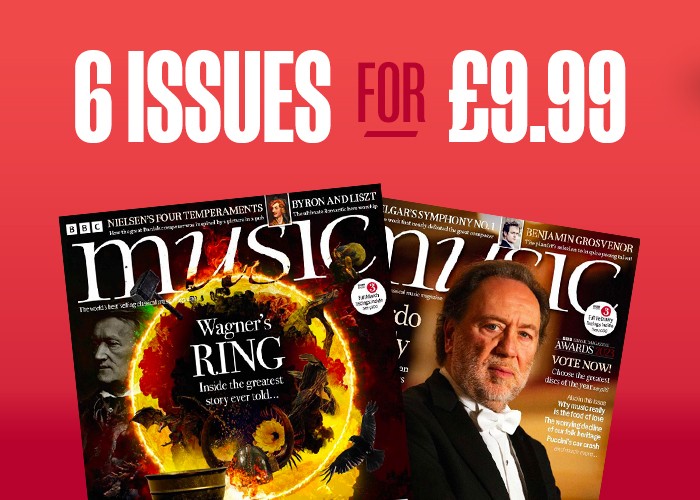A guide to the trumpet: how to hold and play it and the best classical music for the trumpet
All you need to know about the trumpet, from how its played to the best trumpet classical music

Famous for the fanfare, the trumpet can evoke stereotypical images: the collapse of the walls of Jericho, the heraldic announcement and the calls to arms on the one hand and notions of heroism, wealth and power on the other.
However, from the Renaissance era onwards, the trumpet’s warlike attributes underwent subtle changes. It is now a modern instrument capable of extreme contrasts, and of mood swings from the softest lullaby to sudden violent outbursts.
What is a trumpet?
The trumpet is a brass wind instrument, which is similar to a cornet – find out how a trumpet differs to a cornet. It is the highest voiced brass instrument in symphony orchestras and jazz bands or ensembles. The trumpet has three valves that determine the pitch of notes.
How old is the trumpet? When were they invented?
Early man fashioned trumpets from animal horn, wood and metal. Development of this natural trumpet peaked with mid-18th century virtuosos who could produce up to 24 notes from their single, valveless trumpet tube.
The Industrial Revolution spawned a mechanical trumpet (c.1816). Soon, completely chromatic trumpets, with three valves giving access to seven interlocking tubes, were the norm.
Later trumpet technology refined this basic design, producing easier high notes and a 'bigger' sound with a more sophisticated instrument.
How to hold a trumpet
How do you play the trumpet?
The sound of the trumpet is generated directly by the player's body. The lips, equivalent to a singer's vocal chords, vibrate to produce pitch, controlled by the facial muscles.
A steady stream of air, diaphragm-controlled, carries these vibrations into the instrument.
The tongue, articulating consonants as in speech, lends definition, the mouthpiece focus and the trumpet, amplification.
The different parts of the trumpet

A) The bell: Flare and thickness is important for sound quality
B) Main tuning slide: Usually pulled out between 1/2" and 1 "
C) Side trigger: Adjusts the third valve for fine intonation
D) The leadpipe: Important for production of high register; for degree of brilliance of sound
E) The mouthpiece: Rim - must be comfortable on lips. Cup - depth and shape determine a bright or dark sound. Throat size - determines freedom of blow. Backbore - determines intonation and upper register freedom
F) The bow: Important for intonation
G) Second Piston: Pistons are depressed to alter pitch
H) Waterkey: lets out condensation of players breath
Different types of trumpet
B flat trumpet
Standard orchestral instrument
C trumpet
Common alternative to the B flat trumpet, especially in Tchaikovsky and Britten. Produces a more strident sound.
D trumpet
Commonly used for Baroque trumpet parts, but sometimes specified by more modern composers like Ravel in Bolero
E flat trumpet
Modern instrument generally used for the Haydn and Hummel concertos. Can be used orchestrally for greater security in the hight range.
B flat/A piccolo trumpet
Used for the higher Baroque parts, including the Brandenburg Concerto No. 2
Bass trumpet
Introduced to the orchestra by Wagner. Also used by composers such as Strauss and Stravinsky. Due to size of the mouthpiece it is usually played by trombonists.
Rotary valve trumpet
Developed in Germany in 19th century. Increasingly used in other countries for mainstream German repertoire.
Herald trumpet
This is a longer than a standard trumpet designed not only to play fanfares but also so it can hold ceremonial banners
How much does a trumpet cost?
Prices for a decent trumpet usually start at £400 for beginners, while professionals can pay several thousands of pounds or more for their instruments.
Good trumpet makes include Yamaha and Bach
Where does the trumpet sit in the orchestra?
The trumpets tend to sit close to the timpani, in front of the trombones
The best classical music for trumpets
The repertoire for solo trumpet centres on the Baroque and 20th century. For trumpet with ensemble these are the key pieces:
Concertos
Haydn: Trumpet Concerto in E-flat; Hummel: Trumpet Concerto; Peter Maxwell Davies: Trumpet Concerto; Harrison Birtwhistle: Endless Parade
Chamber
Saint-Saëns: Septet in E flat Op. 65; Stravinsky: The Soldier's Tale; Hindemith: Trumpet Sonata
Orchestral
Bach: Brandenburg Concerto No 2; Mahler: Symphony No. 5; Stravinsky: Petrouchka




